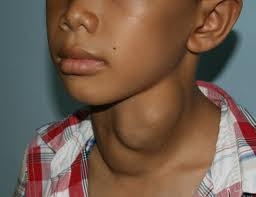Nursing Care Plan : Risk for Infection
Definition of Risk for Infection
The state in which an individual is susceptible to the pathogenic and opportunistic agents (viruses, fungi, bacteria, protozoa, or other parasites) from external sources, sources of exogenous and endogenous.
Related Factors
Pathophysiology
Related to the weakening of the immune host
Chronic disease
Cancer
Renal failure
Arthritis
Hematological disorders
Diabetes mellitus
Hepatic disorders
Respiratory disorders
Collagen diseases
Disturbance-derived
Alcoholism
Immunosuppression
Immunodeficient
Changes or insufficiency leukocytes
Blood dyscrasias
Integumentary system changes
Periodontal Disease
Related to the weakening of the circulation
Limfaedema
Obesity
Peripheral vascular disease
Action
Related to the entry of the organism
Surgery
Dialysis
Total parenteral nutrition
The presence of invasive duct
Intubation
Enteral feeding
Related to the weakening of host resistance
Radiation therapy
Organ transplants
Drug therapy (eg, chemotherapy, immunosuppressants)
Situational (Personal, environmental)
Related to the weakening of host resistance
Prolonged immobilization
His stay in hospital increased
Malnutrition
Stress
Smoke
History of infection
Related to the organism
Trauma
Postpartum period
Bite (animals, humans, insects)
Thermal injury
Environment warm, moist, dark (skin folds, splint)
Related to contact infectious agents (nosocomial or acquired from the community)
Maturisional
(Newborns)
Related to increased vulnerability of infants
Lack of maternal antibodies
Lack of normal flora
Open wounds (umbilicus, circumcision)
(Baby / child)
Related to vulnerability
Less immunization
(Elderly)
Related to vulnerability of the elderly
Conditions that weaken
Decrease the immune response
Multiple chronic diseases
Expected outcomes
Individuals will:
1. Techniques showed a very careful hand washing.
2. Free from the nosocomial infection during hospitalization
3. Demonstrate the ability of the risk factors associated with infection and to take appropriate precautions to prevent infection
Intervention
1. Identification of individuals at risk of nosocomial infection
a. Assess the predictor
- Infection (preoperative)
- Abdominal or thoracic surgery
- Operating more than 2 hours
- Procedure genitouranius
- Instrumentation (ventilator, suction, catheter, nebulizer, tracheostomy, noninvasive monitoring tool)
- Aestesia
b. Assess the factors that confound
- Age younger than 1 year old, or older than 65 years
- Obesity
- The conditions of the underlying disease (COPD, diabetes, cardiovascular disease)
- Drug abuse
- Nutritional Status
- Smokers
2. Reduce organisms that enter the body
a. Wash hands carefully
b. Antiseptic techniques
c. Isolation
d. Necessary diagnostic or therapeutic procedures
e. Reduction of microorganisms that can be transmitted through the air
3. Protect individuals from infection immune deficit
a. Instruct individuals to request to all visitors and personnel to wash their hands before approaching individual.
b. Limit visitors when possible
c. Limit invasive tools (IV, laboratory specimens) to really need it.
d. Teach individuals and family members signs and symptoms of infection
4. Reduce individual susceptibility to infection
a. Push and hold the input of calories and protein in the diet (see Changes in nutrition).
b. Monitor the use or overuse of antimicrobial therapy.
c. Give antimicrobial therapy was prescribed in 15 minutes of the scheduled time
d. Minimize the length of stay in hospital
5. Observe the clinical manifestations of infection (eg, fever, cloudy urine, purulent drainage)
6. Instruct individuals and families to know the causes, risks and the strength of transmission of infection.
7. Report infectious diseases.



